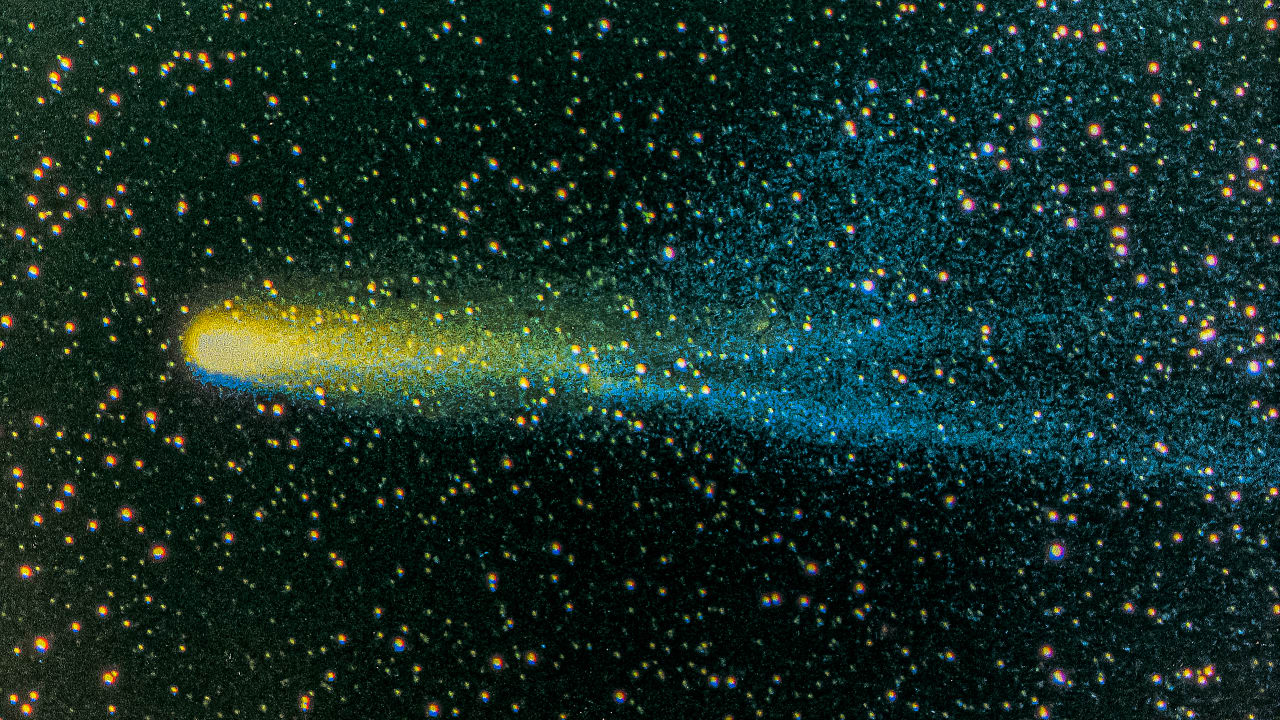Eta Aquarids peak May 2025: See dust from Halley’s comet light up the sky with a meteor shower tonight

Skywatchers, you’re in for a treat. You’re going to want to look up into the night late Monday, May 5 into the early hours of Tuesday, May 6, to see the debris of Halley’s comet as it lights up the sky with a meteor shower called the Eta Aquarids.
Here’s everything you need to know about the Eta Aquarids and the chance to see debris from Halley’s comet in 2025.
What are Halley’s comet and the Eta Aquarids meteor shower, anyway?
While Halley’s comet itself only travels around the sun every 75 or so years, each time it returns to the inner solar system, it sprays debris (ice and rock) into space, which results in two meteor showers each year: the Eta Aquarids in May, and the Orionids in October, creating what we know as shooting stars. (Halley’s comet was last seen in 1986, and won’t come around again until 2061.)
When comets pass by the sun, the dust they emit eventually creates a “dusty trail” around their orbits. Then, when Earth passes through these trails, they interact with our atmosphere, creating those dazzling shows of light in the sky.
The Eta Aquarids peak early in the month of May, and are known for their speed; they travel at about 40.7 miles per second into Earth’s atmosphere, according to NASA. That’s important, because fast meteors can leave glowing incandescent “trains” of debris, which last for several seconds to minutes. During the peak of the Eta Aquarids, viewers can see up to 50 meteors each hour, depending on visibility.
What’s the best time to see the Eta Aquarids meteor shower in 2025?
Peak viewing is this Monday night, May 5 into Tuesday morning, May 6 in the predawn hours, according to NASA’s Bill Cooke, who told the AP that visibility will likely be affected by the moon, which will be two-thirds full. The good news: viewing opportunities will last through the month until May 28.
You can view the Eta Aquarids in both the northern and southern hemispheres, but the southern hemisphere is preferable.
For those of us in the northern hemisphere, viewers can expect to see about 10 meteors an hour, depending on your latitude and conditions that night. Expect to see “Earthgrazers,” which are long meteors “that appear to skim the surface of the Earth at the horizon,” per NASA.
NASA viewing tips for the Eta Aquarids meteor shower
Our friends at NASA offer these tips:
- Find a viewing spot away from city or street lights.
- Lie flat on your back with your feet facing east. You may want to bring a blanket or a lounge chair.
- Look up, taking in as much of the sky as possible. After about 30 minutes in the dark, your eyes will adapt and you will begin to see meteors.
- Be patient. The show will last until dawn, so you have plenty of time to catch a glimpse.
What's Your Reaction?
 Like
0
Like
0
 Dislike
0
Dislike
0
 Love
0
Love
0
 Funny
0
Funny
0
 Angry
0
Angry
0
 Sad
0
Sad
0
 Wow
0
Wow
0




















































![Makola shares glory in visceral “Stone Roses” visual [Music Video]](https://earmilk.com/wp-content/uploads/2025/05/A-5.jpg)









































